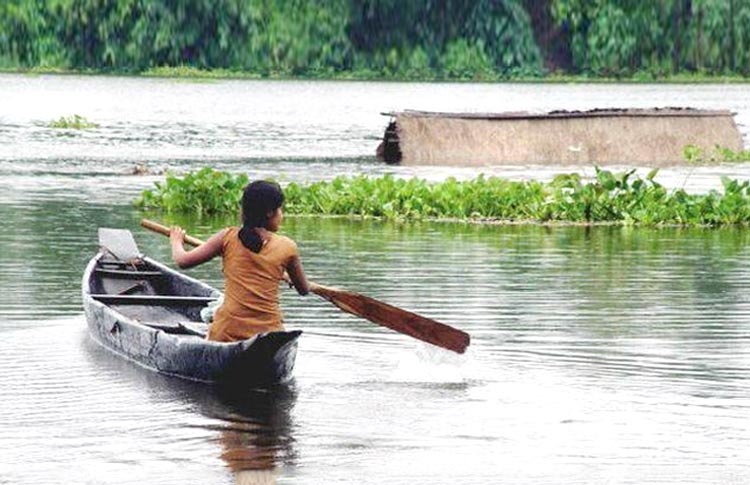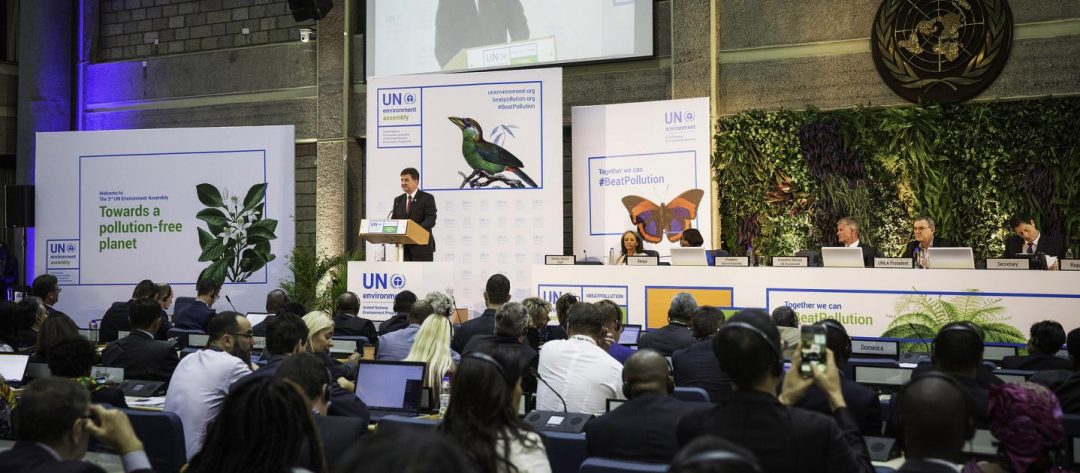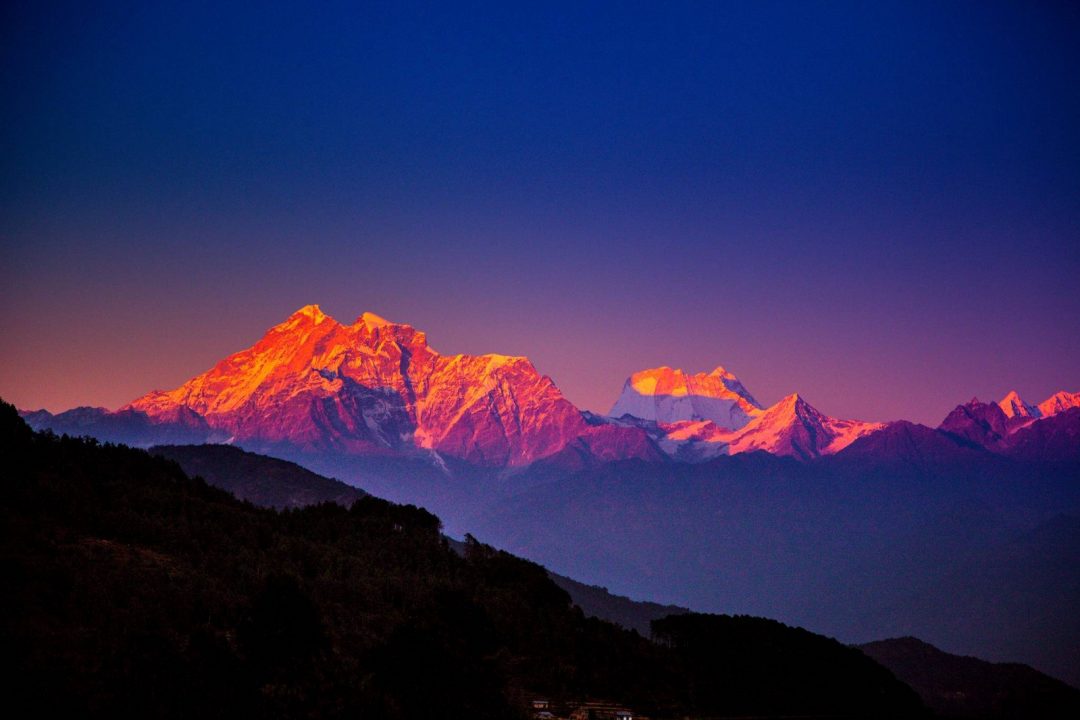Dhaka; UN warns South Asian countries of devastating flood in forthcoming years. The countries, especially Bangladesh and India, face increased risks of more frequent and severe flooding because of climate change, a UN report said.
Bangladesh and India are among vulnerable nations that will be hit hard by droughts too due to the increased concentration of pollutants and low-quality groundwater sources.
The World Water Development Report 2020 by UN-Water, published on March 21, provides a global study of freshwater sources and analyzes the link between water and climate change.
Climate will continue to change and affect societies globally as it “will affect the availability, quality and quantity of water for basic human needs, threatening the effective enjoyment of the human rights to water and sanitation for potentially billions of people,” the report noted, urging states “to make more concrete commitments to address the challenge.”
The report pointed out that monsoon flooding in 2017 affected 40 million people in Bangladesh, India and Nepal, claiming nearly 1,300 lives and putting 1.1 million people in relief camps.
“Floods could cost South Asia as much as US$215 billion each year by 2030. Floods are also expected to contaminate water sources, destroy water points and sanitation facilities, and therefore pose a challenge to universal access to sustainable water and sanitation services,” it added.
According to Chandan Kumar Duarah, the science editor of Asomiya Pratidin, sealevel rising, cyclones and lightining death attributed to climate change will increase migration pressure in neighbouring Northeastern India, specially the adjoining province of Assam.It is seen in Assam that climate change alters habitats so that the carrying capacity of lands can no longer maintain the indigenous population. The changing situation forcing Bangladesis to migrate to resource-rich locations in adjoining northeastern India. There are few unsettled locales left on earth, so these migrants inevitably come into contact with local populations. If resources are strained already, new additions to the community are generally unwelcome. Dissimilar cultural and religious beliefs exacerbate enmity between the groups, as they fear the dissolution of their identities. This is what Assam and various populations around the world are currently experiencing.
In low-lying riverine nation like Bangladesh, flooding is a common natural disaster that affects millions and kills hundreds every year, but there are few efforts to address flooding with long-term and concrete planning, experts say.
“Since 2016, we have seen a change in weather — a gradual increase in rainfall while the level of seawater is on the rise. These are the symptoms of climate change that the UN study warns about. Sadly, our country does not have a long-term plan to address annual flooding apart from some short-term plans such as relief and rehabilitation after flooding,” Sukleash George Costa, regional director of Catholic charity Caritas Rajshahi, which covers flood-prone northern Bangladesh, told UCA News.
Dykes and river embankments are often substandard and cannot withstand strong flooding, while disaster management planning fails to address local situations due to a centralized approach, he noted.
As major rivers in South Asia are transboundary rivers, so all states in the region need to formulate and follow a joint framework for river control for greater welfare of people, Costa added.
In most cases, state and NGO efforts to tackle flooding fall flat due to a lack of proper community involvement and accountability, said a professor of geography and environmental sciences at state-run Begum Rokeya University.
Experts express serious doubts whether policymakers have enough concerns about the future state of their countries in terms of climate change compared to observers. There is no doubt about more flooding and more damage as predicated, but they don’t have a long-term plan.
Environment
NAIROBI: More than 4700 head of state, including French President Emmanuel Macron, ministers from different countries,
business leaders, senior UN officials and representatives from civil society gather at the fourth UN Environment Assembly
(UNEA), held in Nairobi from March 11 to March 15.
The assembly, this year, will consider new policies, technologies and innovative solutions for achieving sustainable
consumption and production. Outcomes from the meeting will set the global environmental agenda and boost chances of
success in the Paris Agreement and 2030 Agenda.
Ahead of the assembly, UN Environment’s Acting Executive Director, Joyce Msuya, appealed to nations to step up and start
delivering real change.
“Time is running short. We are past pledging and politicking. We are past commitments with little accountability. What’s at stake
is life, and society, as the majority of us know it and enjoy it today,” she wrote in a policy letter.
Raising concerns over the growing throwaway culture, Msuya said, “It’s clear that we need to transform the way our economies
work, and the way we value the things that we consume. The goal is to break the link between growth and increased resource
use, and end our throwaway culture.
Like millions of Indians I, too, love the Himalayas. Given the slightest opportunity, I love to surrender to its peaks, valleys, gorges, rivers, ponds and pristine water bodies. But on each of these occasions, along with enormous joy, the panoramic mountain range also gives me equal doses of distress.
The reasons are obvious. All of us know that were the Himalayas not there, we wouldn’t exist. Its peaks assist the monsoons. Its glaciers lend our rivers the pride of being perennial. The furniture made of wood on its slopes enhances the grace of our residences. Its beauty invites people from around the world to visit India. It is the undisputed guardian of our borders. It is not without reason that our ancestors anointed it with the title of Devalaya.
Bhaas, the iconic Sanskrit poet, had said that the beauty that changes its appearance with every moment is worth relishing. Only those who have seen the Himalayas can understand the inherent meaning of this shloka. Many years ago, at Naggar, near Kullu, I looked at Suraj Taal, a painting by Nicholas Roerich. Using watercolours, Roerich had brought the lake to life. On enquiring I discovered that it was the second lake on the way to Leh from Manali. A spontaneous urge to visit and touch and feel this lake began to grip me. Despite my eagerness, experts said I couldn’t visit it with young children. Also, the road was blocked. “If you want to visit it, you should confirm and come again in August,” they said. But August was still 70 days away.
Google had not yet been invented those days. Computers had come in but they were not part of the lives of ordinary people. In the eighth decade of the last century, people couldn’t even dream of the powerful cars that we have today. There were just one or two trustworthy vehicles to speak of.
The first book that I read about Leh said that travel to the region was an adventure, not an excursion, in bold letters. Roerich had visited it on foot many decades ago, we had cars at least. The destination had become twice as attractive. When we reached there we felt we were in paradise. Snow-clad peaks all around us, a lake full of calm, blue waters surrounded by large rocks that looked like meditating monks and cutting through all this, a serpentine road. There was serenity, cold weather and a howling wind. I sat transfixed for a long time even as my colleagues, who were sitting in a car with the windows rolled up, began shouting that the infra-red rays and the chilly wind would harm my face.Read more
My face still carries a few traces of that afternoon. But it was a priceless and timeless experience. I tried to visit the place once again, but clearly the world had changed in two-and-a-half decades. The traffic of tourists on that road had multiplied many times over. Uncultured drivers were not averse to honking or playing loud music. The lake, once the abode of Shiva and Parvati, has lost some of its grace. The Leh of today isn’t an adventure but excursion.
Are we spoiling the Himalayas or inviting self-destruction? Geologists believe the mountain range is still under formation. That’s why its height increases by two millimetres every year. So an earthquake is enough to shake its foundations and that’s why residents and tourists should stay sensitive to these dangers. But the exact opposite is happening.
Last year, the Annals of Glaciology published a paper by Anil Kulkarni, a scientist with the Indian Institute of Science, Bengaluru. According to this paper, glaciers in the Chandra Basin had melted at a much faster speed between 1984 and 2012. According to Kulkarni, although the threat isn’t immediate, if the trend continues, our rivers may eventually go dry. Can you imagine the existence of human life without rivers such as Jhelum, Chenab, Ravi, Beas, Sutlej, Sindhu, Ganga, Yamuna, Brahmaputra and Spiti?
Kulkarni’s study is based on extensive research, but there is much that an ordinary person like me can comprehend. Let me give you the example of the Sahastra Dhara near Dehradun. Many years ago, looking at its streams, one got the feeling of having arrived at a mini Manali: waterfalls emerging from the womb of mountain ranges, a dense forest surrounding the mountains and a cool pristine breeze that made the setting even more inviting. There is a bungalow built by the public works department near the waterfalls, where Jawaharlal Nehru came and stayed and appreciated nature’s bounty. Today the stream of water has become extremely feeble and nature’s glory has been lost. It has been replaced by a number of concrete buildings. There are hundreds of such stories of destruction. As Indians, we haven’t managed to build a hill station after Independence, but we’ve destroyed the existing ones.
Yesterday, on the occasion of Himalaya Divas (Himalaya Day), you would have seen the government and NGOs going through the customary motions. Till when will we keep celebrating our destruction?
Shashi Shekhar is editor-in-chief Hindustan



